Walter Isaacson: It’s 1968, and we find ourself in the dressing room of a popular daytime talk show hosted by former big band singer, Mike Douglas. The guest waiting to go on stage for a public nominee for President, Richard Nixon.
It was Nixon’s second run at the Presidency. This time against the sitting Vice President, Hubert Humphrey. In Nixon’s mind, the main obstacle he faced wasn’t Humphrey, but something much more powerful. Television. Nixon hated the camera and it hated him. In the eyes of the American public he was still the wooden politician who had lost to John Kennedy. If Nixon wanted to improve his fortunes this time around he knew he would have to reinvent himself.
Only today, that stage at the Mike Douglas show things were getting off to a bit of a rocky start. While waiting in his dressing room, Nixon discovered that he was scheduled to follow an act called Little Egypt. A belly dancer who performed with a boa constrictor. Nixon was not impressed. He looked at the show’s 27 year old producer and shook his head in disdained. “It’s a shame a man as to use gimmicks like this to get elected.” “Television is not a gimmick,” the producer replied and went on to tell Nixon that the reason he lost to Kennedy is because he didn’t play well on TV. If he wanted to win, television was a medium he’d have to embrace.
Nixon listened. They only talked for around 10 minutes, but it was a conversation that would change the face of political campaign in American well into the next century. That daytime talk show producer would become the architect of Nixon’s rebranding effort. His name? Roger Ailes. Ailes ushered in a new kind of stage politics where a candidates carefully rehearsed performance was the key to success. “This is it, this is the way they’ll be elected for ever more,” proclaimed Ailes. “The next guys will have to be performers.”
I’m Walter Isaacson, and you’re listening to Trailblazers, an original podcast from Dell Technologies.
Speakers 1,2,3,4,5: The stage of this show is that voting machine right there.
We are engaged in a sacred cause. The preservation of American Democracy.
The heart of Democracy is the polls.
The ultimate power rests always in the hands of the voter.
After all, we can’t be too careful who we send to Washington.
Walter Isaacson: For the next 30 years, television remained the dominant medium for political campaign. It precipitated dramatic changes in the world of politics. Today, the Internet, and specifically social media, is transforming politics in similar ways. It has increased political engagement and lead to new ways of thinking about political campaigns and even the Presidency itself.
Before candidates used television to reach the masses, there was radio. Never before had politicians been able to speak to millions of Americans at the same time. By 1928, roughly 50% of the population had a radio. That years presidential race, between Herbert Hoover and the New York Democrat, Al Smith, is widely seen as the first true radio campaign. But it was really Franklin D. Roosevelt who knew how to use radio to sway the national audience.
FDR: My friends, I have been on a journey of husbandry.
Anthony Rudel: One of his great advantages was that he was an incredible speaker.
Walter Isaacson: Anthony Rudel is the author of Hello Everybody! The Dawn of American Radio.
Anthony Rudel: He was very crafty in how he used the medium, but his other great skill was the use of words and how to make them resonate.
Walter Isaacson: FDR’s compelling speaking style would serve him well when he ran for President in 1932 in what would be an epic radio battle against Herbert Hoover.
Anthony Rudel: The date was October 25th. He was, Roosevelt, was in Baltimore where he gave a speech at the 5th Regiment Armory. That speech, as most of his speeches at this point, was radioed to a national audience. During that speech, Roosevelt said, “I am waging a war in this campaign. A frontal attack, an onset against the four horseman of present Republican leadership. The Horsemen of destruction, delay, deceit and despair.” And that’s what people remembered. It was an incredible speech and that speech triumphed for him.
Walter Isaacson: Unlike his Republican challenger, Roosevelt new the power of a staccato pause and how to use dramatic phrases that would stick in the voters mind.
FDR: First of all, let me assert my firm belief that the only thing we have is fear itself.
Walter Isaacson: But perhaps most notably, FDR’s relationship with the medium caused it to catch on as a leadership tool. In the same way that Kennedy was the first television President, Roosevelt had claimed that title for radio.
Anthony Rudel.
Anthony Rudel: You could compare Hoover and FDR in ’32 to the 1960 campaign of Nixon and Kennedy in terms of their ability to use the medium properly. In the Nixon-Kennedy debates, Kennedy knew how to use television. He looked striking, he looked strong. Nixon looked washed out, he looked nervous, he looked ill at ease.
Walter Isaacson: Joe Trippi is a political strategist.
Joe Trippi: It used to be that did you have the voice of God on radio. Suddenly it became how you looked. Television, I think, changed not just our communications but changed the kind of leaders that emerged.
Ronald Reagan: 19 years ago, almost to the day, we lost three astronauts in a terrible accident on the ground but we’ve never lost an astronaut in flight. We’ve never had a tragedy like this.
Walter Isaacson: Ronald Reagan was the quintessential candidate of the television age. As a former actor, he brought strong theatrical skills to the Presidency. Michael Deaver, his chief of staff, made it his mission to put Reagan in impromptu situations that would showcase his acting talent and create a powerful image driven narrative without requiring the candidate to utter a single word.
There’s one Reagan photo op in particular which speaks to Deaver’s brilliance. It was 1984 and Reagan was campaigning for re-election. He had just finished his speech at the University of Alabama, but before boarding Air Force 1 to return to Washington, Deaver decided that Reagan would make a pit stop at a local McDonald’s for lunch. Reagan ordered a Big Mac and fries from the stunned cashier. After he got his food, Deaver quietly reminded him to pay and slipped him a $20 bill. Deaver then directed the President toward the seating area and Reagan’s natural charm did the rest.
He approached two men, asked if he could join them and when all was said and done, Reagan’s “spontaneous” Big Mac lunch would be played and replayed on the evening news. It would submit Reagan’s image as the humble every man in the minds of Americans. By the time Reagan left office in 1988, a new communications technology was on the horizon. The Internet allowed ordinary citizens to participate in campaigns in a whole new way. Communication between the candidate and the voter was no longer a one way street. The first politician to understand and embrace this was the obscure Governor of Vermont. Howard Dean.
Dean made an audacious run at the Democratic nomination in 2004 against big named, big budgeted Democrats such as Al Gore. Nobody gave Dean a second thought, but then a strange thing happened. Dean’s campaign manager, Joe Trippi, discovered a website called Meetup.com which changed everything. Not just for Dean’s run, but for every successful campaign that would follow and it all started because Trippi got into a fight with a blogger.
Joe Trippi.
Joe Trippi: I had been on a MyDD Blog following Jerome Armstrong who wrote for that blog and was one of the founders of it. He and I had gotten into an argument one day. He was one of the first bloggers to call me an idiot, which would happen quite a bit throughout the rest of my career. But he did bring up that I should check out Meetup.com that there were a lot of Dean supporters that were on the MyDD blog that were also trying to meet online and then meet offline at meet ups across the country, and that maybe the campaign should take a look at it.
Walter Isaacson: Trippi did check out Meetup.com. The website allowed members to use their zip codes to connect with like minded people in their neighborhoods. He immediately knew that this tool would redefine politics.
Joe Trippi: The second I saw it I realized immediately how it was going to bring people together and let us start a different kind of on the ground effort than any other campaign in history had done. It was explosive. I mean, the people who were signing up to support Howard Dean online would click the Meetup.com link, find a meet up for Howard Dean in their local community. They would meet once a week or once a month and became literally the on the ground work force, volunteer force of the Dean for America campaign.
Walter Isaacson: Part of the magic of Meetup.com was that it brought together Dean supporters outside of the campaign’s official networks. The face-to-face interactions created an intense bond among participants and that increased online donations to the campaign. Most importantly, it empowered voters to start campaigning within their own community.
Joe Trippi: I remember there was a person in California, an old gentleman. He had been getting up everyday reading the obituaries wondering when his time would come up. It was actually my wife who had answered the phone in the Dean Headquarters and he was thanking her because the Dean campaign had given him purpose and he was organizing in his community. About a month later he called her up and said, “I scraped together enough money and I bought a laptop.” Then a week or two later he called her up and said, “I’m going to my first meet up.” Then it turned out he had become the leader of the meet up in the Dean campaign in Riverside, California. It wasn’t just young people merging as leaders, but people started to realize hey, I have a voice. I can bring people together. I can lead them and help change the country in the direction I want to take it. You never had that capability before in American politics.
Walter Isaacson: After a few short months of launching his campaign, Howard Dean managed to raise more than 25 million in small, online donations. More than any other Democrat in the race. Suddenly, he was at the top of the poll. Although Dean ultimately lost, his campaign became an example of how social media could shift the balance of power in politics. Ordinary people were now empowered to support one another and to take on positions of leadership. A dialogue had opened up between voters and candidate.
Republican campaign strategists also started to take notice.
Ken Mehlman: Howard Dean started off as an asterisk.
Walter Isaacson: Ken Mehlman was a former chairman of the Republican National Committee and campaign manager for George W. Bush’s 2004 campaign for re-election.
Ken Mehlman: He had less money, he had less attention, so what did he do? First, he had a more dynamic and innovative message than his opponents did. Second, they used the Meetup platform as a way to empower your supporters as opposed to waiting for a message from on high, empower your supporters to together connect and immobilize and include new people.
Walter Isaacson: But Bush’s team wasn’t just inspired by the Internet organizing of the Dean campaign, they were also studying some of the innovations that had occurred outside of politics among consumer marketing companies.
Ken Mehlman: It was the first Presidential campaign, at least, to essentially use consumer data to develop models for predicting how individuals might thing about public policy that allowed us in a much more granular specific and cost effective way to reach voters. We were able to develop much more granular and specific information that tells you that if someone drives a certain car, drinks a certain liquor, shops in a certain way, gets information at a certain place, then you have a better predictive sense of where they are on a particular issue.
Walter Isaacson: The Bush 2004 reelection was the first Presidential campaign to use consumer data base targeting to reach voters. They thought it could make all the difference in a tight race. Targeting can be done with all kinds of different data pools. Consumer data, voter data, economic or education data. But the objective is always the same. To draft policies and messages that appeal to specific voting blocks.
While Howard Dean was using the Internet to connect his supporters across the US, and Bush was adopting targeting to be sure he spoke the language of minority voters, somewhere in Chicago an unknown State Senator was taking notes.
Barack Obama: There is not a liberal America and a conservative America. There is the United States of America. There is not a black America, and a white America, and latino America, and asian America, there’s the United States of America.
Walter Isaacson: When Barack Obama began his bid for the Democratic nomination, he saw social media as a tool that can empower voters to launch a political movement. He enlisted alumni from the Howard Dean campaign to lead his digital team. Every social networking platform available was used to connect people to his campaign website, “Obama for America.” Twitter, Facebook, and Tumbler became vehicles for voters to share Obama related content, fundraise and organize. Obama supporters across the country now had a tool that could unite.
David Axelrod: We were able through the use of social media and meet ups to put together organizations, sometimes in places where Democrats had had hard times putting organizations together.
Walter Isaacson: David Axelrod was the Chief Strategist for both of Barack Obama’s Presidential Campaigns and is the author of “Believer, My 40 Years In Politics.”
David Axelrod: This became really important because we ended up competing in a lot of caucus states where the grass roots organization as hugely important. You know, obviously, as time went on the ability to communicate messaging to our supporters, the kind of use of Facebook that has now become even more sophisticated was important and we made full use of the technology at the time.
Walter Isaacson: The power of social media was never more effectively demonstrated than in Obama’s campaign slogan Yes We Can. Although, campaign slogans weren’t new, there had never been one that caught on the way Yes We Can did. It was all thanks to the Internet. In case you’re curious, the phrase Yes We Can originally came from Obama’s Illinois Senate race in 2004, but it was very nearly scrapped during the taping of his first political ad for his Senate run. David Axelrod was at that taping.
David Axelrod: We did the first take of that ad and Obama stopped and said, “Yes we can, is that too corny?” And my heart sunk because I really believed in it. I believed in it because it was about us and not him. It was positive at a time when people were feeling so negatively about politics and I thought it was perfect to capture the sort of feel and theme and message of our campaign. Luckily, Michelle Obama was there to watch this historic taping of his first ad. He turned to Michelle and he said, “Mich, what do you think?” She just shook her head slowly and I remember her chin was in her hand. She said, “Not corny.” He said, “Okay, great. Well, let’s do it.”
Walter Isaacson: Even though the slogan wasn’t used in all of Obama’s messaging for his Presidential run, his Yes We Can speech captured the spirit of something much bigger.
Barack Obama: For when we have faced down impossible odds, when we’ve been told we’re not ready or that we shouldn’t try, or that we can’t, generations of Americans have responded with a simple creed that sums of the spirit of a people. Yes We Can. Yes We Can. Yes We Can.
Walter Isaacson: Through the power of social media, the speech went viral and Obama’s campaign exploded. Democratic strategist Joe Trippi.
Joe Trippi: It was a sea change where it wasn’t Barack Obama saying, “Hey, look at this great speech I gave,” which is typical how politicians and campaigns do it. No, it was millions of citizens saying, “Hey, look at this guy. Check him out. This is a great speech.” Well, that came from your best friend, or your mom, or your brother, or sister, or a co-worker at work and that had a lot more power to it than the campaign saying, “This will be the greatest speech you ever saw.”
Walter Isaacson: For the first time, user generated content was having a massive effect on voter engagement. Over half of American voters used the web to engage in the election. And Obama supporters were leading the way in terms of online political action. 48% of Obama’s contributions came from small donations of less than $200. Many small donors were outside of the Democratic party’s core voter base.
Joe Trippi.
Joe Trippi: Yeah, I don’t believe Barack Obama would have gotten the nomination in 2008 without the Internet and the tools that were out there. I don’t believe it would have happened without citizens being able to connect with each other on the Internet and give him the resources and the early support he needed to overcome the advantages that the party regulars had.
Walter Isaacson: By the time Obama ran for re-election in 2012, the use of technology had come a long way. Social media platforms like Facebook and Twitter were now mainstream tools for distributing campaign information and collecting consumer data to drive targeting. Browser cookies could track a person’s web activity and match it with their voter record. That was a game changer. A person’s online and offline life could finally be merged.
Obama’s campaign made technology key in its day-to-day operation. At its helm was Harper Reed, a 33 year old hacker from Chicago with a red mohawk and chunky hipsters glasses. He was hired as the campaigns Chief Technology Officer.
Harper Reed: Technology, as we told ourselves a lot in 2012, should be a force multiplier. It should augment your processes already. These are processes like sending emails or sending direct mail, making phone calls and also knocking on doors. That’s one of the main ways that we won in 2012 was by doing all of that. Now, the interesting thing is we did it by backing it with data. So the analytics teams were able to look at all of this great data we had and figure out whose door should we knock on to make the most impact.
Walter Isaacson: David Axelrod.
David Axelrod: Their are singular contribution and a lot of things flowed from it was to crunch thousands of bits of data and create voter scores so that we could make some judgments as to who was likely to vote, and who was likely to vote for us, who was certain to vote against us and who were among the persuadable universe. That’s an enormously important finding because you don’t want to spend a lot of time and effort trying to persuade people who are definitely for you or against you.
Walter Isaacson: Like in 2008, Obama’s re-election campaign empowered users to connect to Obama For America through social media. But this time, sites like Facebook had grown exponentially which gave the campaign even more data that could be harvested to targeting.
Harper Reed.
Harper Reed: In 2012, it was very easy for us to get this type of data that Facebook later banned called Friend to Friend. What that meant is that when I logged into Facebook and I chose to share my data with the campaign that I was sharing my data, my friends data and then my friends friends data. That’s a lot of friends there. And it actually turned out to be a huge number of friends. We were able to get this without breaking any terms of service, without being sketchy and people were willing to share it, as well.
Walter Isaacson: If you look at press reports at the time, you’d think that technology played a leading role in Obama’s victory. A Guardian headline read, “A unified computer database that gathers and refines information on millions of potential voters is at the forefront of campaign technology and could be the key to an Obama win.” But if you talked to people inside the campaign, you’ll find there’s much more to the story.
Harper Reed: You can not win an election with good technology. Now, you can certainly lose an election by investing in bad technology. You just can’t win by investing in good technology.
Walter Isaacson: Harper Reed.
Harper Reed: After the Obama campaign, there was a huge amount of hype on how technology and specifically data and analytics were the reason that Barack Obama won. As the Chief Technology Officer, that worked super well for me, personally, but it was actually not true. The difference is the narrative was that it was all about technology tools, it was all about social media. In reality, it was the same kind of technology that we used in 2008 and in 2004. Barack Obama won because more people voted. When you look at where the analytics really helped, where it helped is helping the campaign figure out who to go knock on a door and whose door to knock on.
Walter Isaacson: As it turned out, in 2012 knocking on doors was a much better way of gathering accurate voter data than paying big bucks to some consumer analytics firm.
Harper Reed: All the data that we bought, we obviously tested it and looked at it, turned out to just be kind of trash. It just wasn’t good data. For example, it said that I subscribed to Golf Magazine. And those who know me know that I don’t subscribe to Golf Magazine. We found that we could use the data that we would have to clean up and do a lot of work to make it good, the data we purchased. Or, we could just simply go knock on that person’s door with one of our millions of volunteers and just kind of ask them some questions that we knew would help us.
Walter Isaacson: Much like Harper Reed, Romney’s Campaign Director of Data Science, Alex Lundry, also points out the flaws in consumer data.
Alex Lundry: What is totally overhyped is the notion that our predictions are exceptional or highly accurate. They are only accurate in the aggregate. There’s always a Texan living in Chinatown. There are always going to be exceptions to the rule. This notion that our models, that we can tell you something about yourself you didn’t even know, that’s just foolish. It’s completely over hyped.
Walter Isaacson: After the post mortem of the 2012 election, both Democratic and Republican strategists thought they had a blueprint for how to proceed in 2016. What data might be useful for targeting? What ultimately wasn’t? Then along came Donald Trump.
Donald Trump: Ladies and gentlemen, I am officially running for President of the United States and we are going to make our country great again.
Walter Isaacson: Trump had no political experience, but then Roger Ailes gave him a megaphone and access to the largest cable television news audience. The viewers of Fox News. At the time, Ailes was the CEO of Fox News and allowed Trump to make weekly call ins to the morning show Fox and Friends. Like Reagan, Trump was a natural performer. And like Ailes, he knew the value of merging news with entertainment.
Trump was also taking full advantage of social media to spread his message and start a dialogue with voters. Much to the surprise of campaign strategist Joe Trippi, he was taking a page from Howard Dean’s playbook.
Joe Trippi: I remember distinctly being totally like the hair on the back of my neck going straight up because I realized Twitter was his Dean for America blog. It was him commenting and his followers and supporters engaging with him directly and spreading his message to their friends, co-workers and family directly just like we did on the Dean for America blog. His Twitter was, and is still, Donald Trumps blog.
Walter Isaacson: Now we know that Facebook and Twitter played a large role in Trump’s victory. But the extraordinary thing is, we still don’t really know, and may never know, exactly how the 2016 election was won. What we do know, is that for those who put so much faith in data and technology, the 2016 post mortem has been particularly revealing.
Harper Reed.
Harper Reed: My guess about 2016, and this is purely a guess, is that one of the things that we did as Democrats is that we focused so aggressively on the data, our own data. We kind of listened to ourselves too much that we didn’t follow some of the more anachronistic or some of the more traditional ways of gathering that data. Polling, focus groups, etc, we listened only to our internal data, which I think is important. You have to listen to that stuff. But I think we listened to it so much that we made mistakes. We didn’t follow the rules that campaigns had followed for a long time because we thought that we were smarter than the past. You’re never smarter than the past.
Walter Isaacson: Lynn Vavreck is a Professor of American Politics and Public Policy at the University of California, Los Angeles.
Lynn Vavreck: This is an election that was very close. To point the finger at any one thing I think isn’t productive. This was an election about identity and about candidate traits and characteristics and that one candidate had a very specific view of what it meant to be an American and the other candidate had a very different view. That has very little to do with traveling to those areas and with shaking people’s hands and meeting them. It has very little to do, honestly, with the data analytics.
Walter Isaacson: Donald Trump was a candidate unlike any other in modern American history. He broke most of the rules of political campaigning and still won. Whether anyone else will be able to successfully follow his playbook remains to be seen, but here’s what history teaches us. Campaigns will continue to look for a technological edge. There will always be a digital disruptor on the horizon that will serve as a game changer, and over the course of several campaigns smart political strategists will figure out ways to add it to the campaign tool kit. But the most important tool in that box may still be the most low tech of them all. A knock on the voters door.
I’m Walter Isaacson and you’ve been listening to Trailblazers. An original podcast from Dell Technology. Thanks for listening.
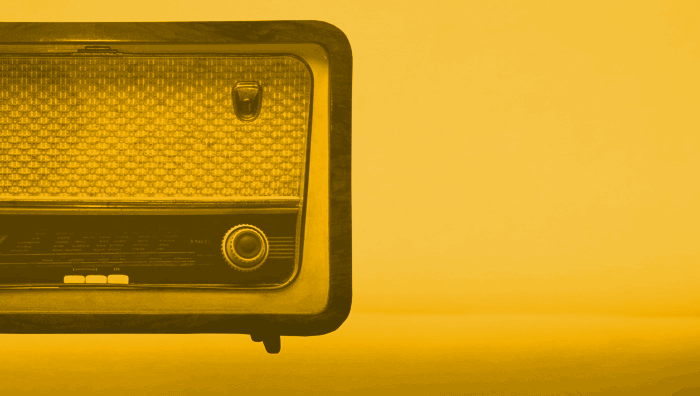 Radio Free Advertising
Radio Free Advertising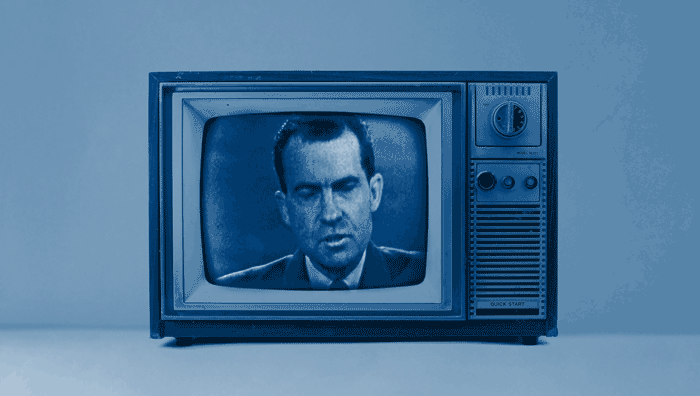 Video Kills the Radio Star
Video Kills the Radio Star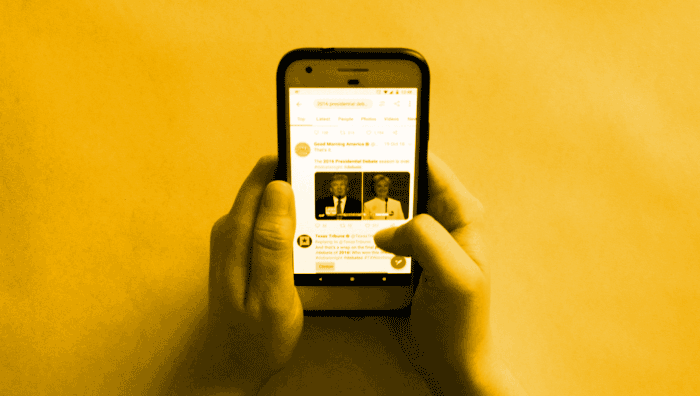 The Internet Changes Everything
The Internet Changes Everything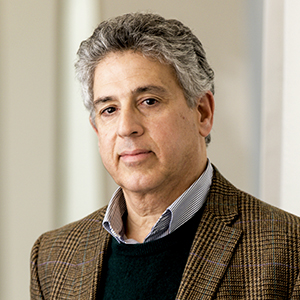 Anthony Rudel
is the author of Hello, Everybody! The Dawn of American Radio and has been a broadcaster and media consultant for more than 25 years.
Anthony Rudel
is the author of Hello, Everybody! The Dawn of American Radio and has been a broadcaster and media consultant for more than 25 years.
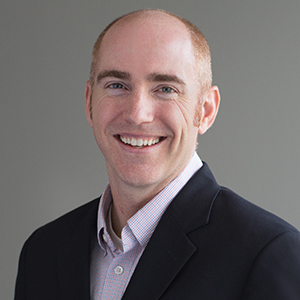 Alex Lundry
is the co-founder at Deep Root Analytics and was the Director of Data Science for Mitt Romney’s 2012 presidential bid and the Chief Analytics Officer for Jeb Bush’s 2016 primary campaign.
Alex Lundry
is the co-founder at Deep Root Analytics and was the Director of Data Science for Mitt Romney’s 2012 presidential bid and the Chief Analytics Officer for Jeb Bush’s 2016 primary campaign.
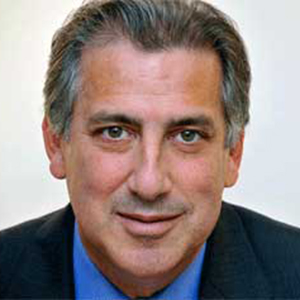 Joe Trippi
is a longtime Democratic Strategist and CNN contributor. Trippi was the manager for Howard Dean's presidential campaign in 2004. He’s the author of The Revolution Will Not Be Televised.
Joe Trippi
is a longtime Democratic Strategist and CNN contributor. Trippi was the manager for Howard Dean's presidential campaign in 2004. He’s the author of The Revolution Will Not Be Televised.
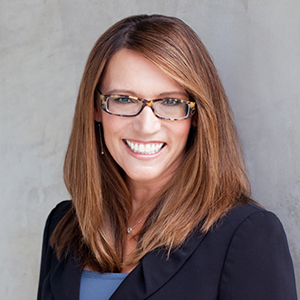 Lynn Vavreck
is a Professor of American Politics at UCLA and a contributor to The New York Times. She is the co-author of Identity Crisis about the 2016 Presidential Campaign.
Lynn Vavreck
is a Professor of American Politics at UCLA and a contributor to The New York Times. She is the co-author of Identity Crisis about the 2016 Presidential Campaign.
 Harper Reed
is a technologist that predicts the future for a living. He was the Chief Technology Officer for Barack Obama’s 2012 re-election campaign.
Harper Reed
is a technologist that predicts the future for a living. He was the Chief Technology Officer for Barack Obama’s 2012 re-election campaign.
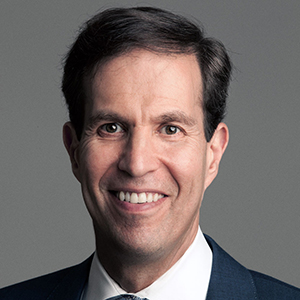 Ken Mehlman
has spent a dozen years in national politics including as 62nd Chairman of the Republican National Committee and campaign manager of President Bush’s 2004 re-election campaign.
Ken Mehlman
has spent a dozen years in national politics including as 62nd Chairman of the Republican National Committee and campaign manager of President Bush’s 2004 re-election campaign.
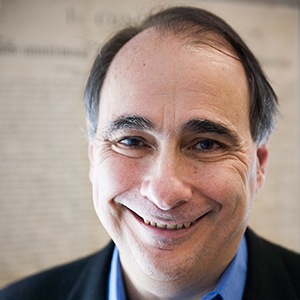 David Axelrod
is an American political consultant and was the Chief Strategist for Barack Obama's presidential campaigns. After the election, Axelrod served as Senior Advisor to the President.
David Axelrod
is an American political consultant and was the Chief Strategist for Barack Obama's presidential campaigns. After the election, Axelrod served as Senior Advisor to the President.